More IEM Comparisons
I was able to compare the Quattros with some additional IEMs at my local audio dealer, Addicted to Audio in Melbourne. The Hiby R6 Pro II was used, with the Quattros set at a volume of 28.
Dunu Kima – 1xDD (USD $109)
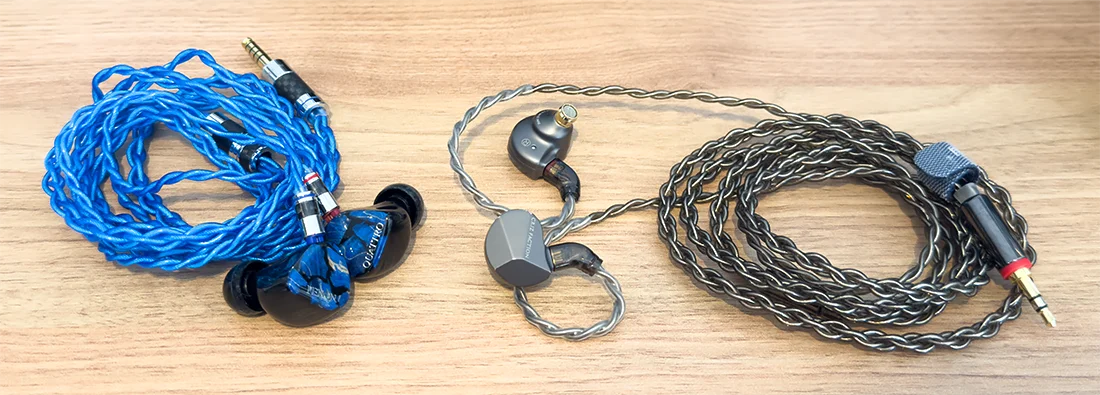
Physically the Kimas are tremendously light and small, and comfort levels are exceptionally good. Requiring 30 volume on the R6P2’s 3.5mm jack I’m surprised by how much power they need.
Significantly brighter which a much thinner presentation, the Kimas feature much more upper midrange emphasis with far less midbass & lower midrange prominence than the Quattros.
The Kimas sound a little shouty & ethereal with a tonality reminiscent of Harman-tuned IEMs, imaging can be a little vague and note weight is far inferior to that of the Quattros, so overall they feel very outclassed.
Noble Audio Stage 3 – 2xBA 1xDD (USD $600)
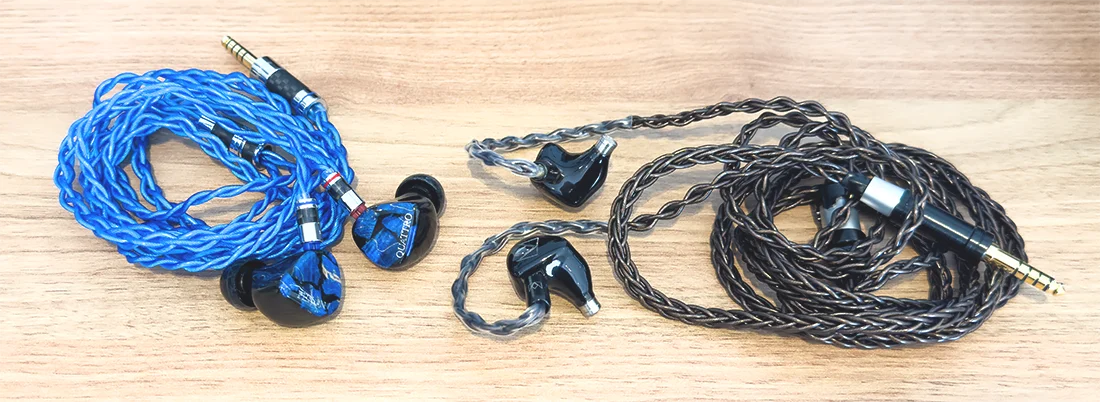
The Stage 3s are physically similar to the Quattros albeit slightly smaller. Comfort levels are comparable, but the Stage 3s isolate slightly better. Needing 22 volume on the R6P2 they’re fairly easy to drive.
I find the Stage 3s a little shouty with more upper midrange emphasis, vocals can feel somewhat distant with a touch of hollowness compared to the Quattros. The stage 3s also emphasise midbass more than the Quattros, but are similarly dark in the treble.
By contrast the Quattros are much smoother especially in the midrange, with a wider soundstage though the Stage 3s’ stage is slightly deeper and they’re more dynamic. Resolution feels similar between them, the Stage 3 DD driver feel noticeably slower and I much prefer the Quattros’ tonality.
64 Audio U4s – 3xBA 1xDD (USD $1099)
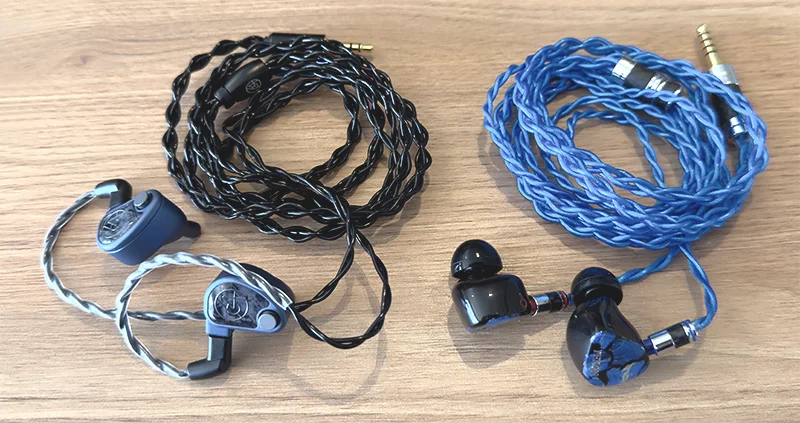
To my surprise the U4s seem physically larger than the Quattros and stick out quite a bit, but are perfectly sculpted to my canals and are slightly more comfortable. Needing 24 volume on the R6P2 3.5mm jack they’re easy to drive.
The U4s are much brighter & thinner sounding than the Quattros, nor as bass dominant but I find their bass texture to be more satisfying. They’re ]more neutral but not as smooth, with vocals tilted slightly towards the upper midrange with what feels like the occasional treble peak present.
The U4s have a narrower soundstage surprisingly, but their background is blacker and imaging is sharper, though note weight is unsurprisingly diminished compared to the Quattros.
64 Audio Volür – 8xBA 2xDD (USD $2499)
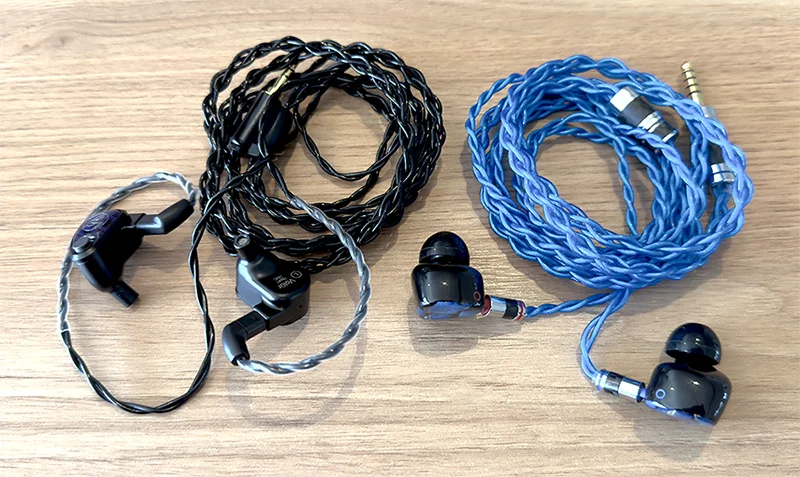
Physically Volur seem identical to the U4s, so though they’re quite large comfort is excellent. Again they require only 24 on the R6P2’s 3.5mm jack so they’re easy to drive.
Volur are extremely well balanced & coherent to the point where nothing immediately jumps out about them – they’re great at getting out of the way of the music. They’re smoother than the U4s with treble that’s much tamer, in fact of all the IEMs I’ve A/Bed the Quattros against Volur are the closest match.
Vocals on the Volur feel quite forward but their bass texture doesn’t impress as much as U4s’ does, however they’re much thicker & smoother though still lagging behind the Quattros there. Volur are more resolving with sharper imaging though, with impressive effortlessness in the way they present detail, and their soundstage is deeper.
Campfire Audio Trifecta – 3xDD (USD $3375)
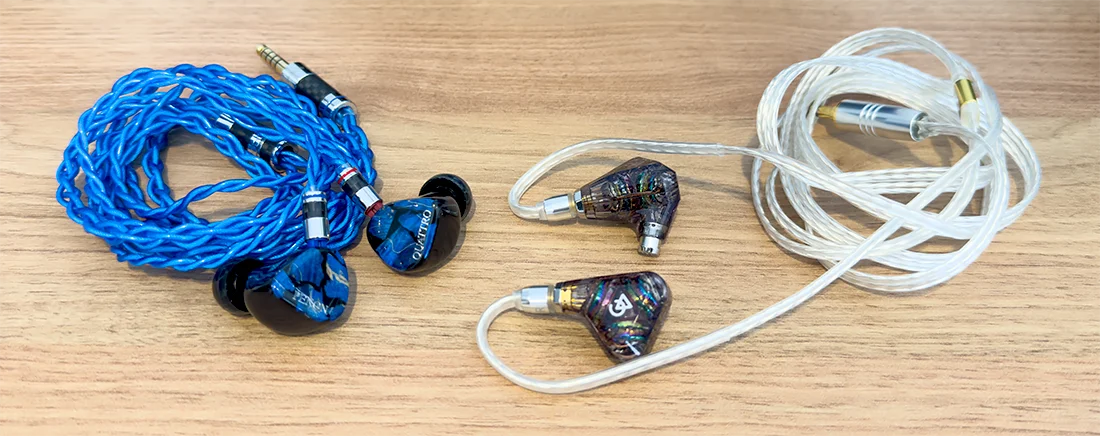
The Trifectas’ shape is rather unusual. They’re heavier than the Quattros and stick out quite a bit, but comfort & isolation levels are similar between the two. Requiring just 23 on the R6P2’s 3.5mm jack they’re incredibly easy to drive.
There’s distinct similarities here, both Trifecta & Quattro are very bass dominant with Trifecta bass being even more prominent, going deeper and possessing greater rumble & more satisfying texture, but is also much slower – Trifectas possess some of the slowest drivers of any flagship IEM I’ve heard which makes them problematic for faster-paced music.
Trifecta are considerably brighter and I notice potentially troublesome treble peaks, but are much more dynamic with even better note weight. They’re also more resolving with a larger soundstage, whereas the Quattros are smoother, warmer & more midrange-centric but less impactful and darker.
Page 1 – Introduction, Packaging & Ergonomics
Page 2 – Sound Impressions & Technical Performance
Page 3 – IEM Comparisons
Page 4 – More IEM Comparisons
Page 5 – Cable Comparisons
Page 6 – Conclusion

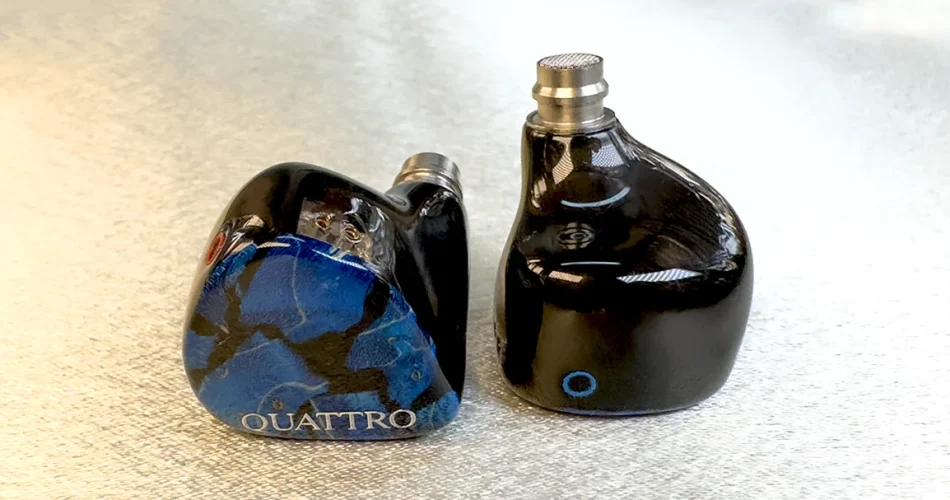
Great review Nick. They sound like they are well worth checking out at that price.
Glad you liked it John! They’re the best I’ve heard for this kind of sound under $1000, a very safe recommendation for folks looking for something smooth & warm.